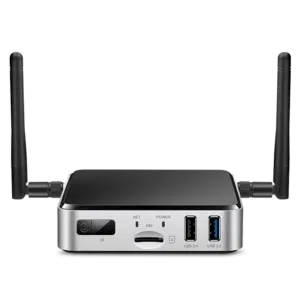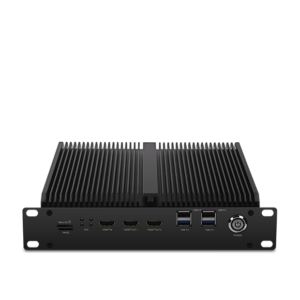Real-World Purposes of AI on Side Devices
Real-World Purposes of AI on Side Devices
Blog Article
Real-World Programs of AI on Side Devices
Real-World Purposes of AI on Side Units
Artificial intelligence (AI) is no further confined to the sphere of large, centralized data centers. As a result of breakthroughs in engineering, edge products now enjoy a key position in deploying AI immediately wherever information is generated. But what does AI on edge products suggest, and how come it producing this type of news? Here, we'll explore how edge ai hardware works in the real world through edge units and reveal its wide selection of sensible applications.

What's AI on Side Devices?
AI on edge units identifies deploying artificial intelligence methods directly on products like smartphones, cameras, drones, or IoT sensors. These units do not require access to centralized servers for processing knowledge; instead, they conduct analysis and choices locally, creating the procedure quicker, more efficient, and usually more secure.
The "edge" here only describes processing done close to or at the source of information technology, as opposed to depending on the cloud. This change is pushed by the requirements for real-time data control and the requirement to reduce latency, enhance privacy, and lower bandwidth usage.
Critical Real-World Programs of Edge AI
1. Clever Monitoring
AI-powered cameras equipped with face recognition, action recognition, and anomaly recognition are transforming surveillance systems. Side products in this domain can analyze movie streams in real-time to recognize suspicious actions, eliminate false alarms, and increase community safety. Like, AI formulas can find uncommon actions and alert authorities instantly without the necessity to send video information to a central machine for analysis.
2. Healthcare Checking
Wearable units and portable medical gear are leveraging ai m.2 module for managing health data more efficiently. Edge-based AI in units like health trackers and smartwatches displays users' vitals, such as for instance heart rate, oxygen degrees, or blood force, in real-time. These programs analyze data domestically and provide immediate feedback, paving the way for quicker treatment all through emergencies.
Beyond wearables, sophisticated medical imaging products built with on-device AI can detect signals of conditions like cancer, allowing early in the day diagnoses even in remote parts without net connectivity.
3. Autonomous Vehicles
Self-driving vehicles are among the most well-known samples of side AI in action. With receptors, cameras, and LiDAR techniques helping as knowledge places, AI computations take place onboard these vehicles to create split-second decisions. From detecting pedestrians and obstacles to navigating city roads, side AI guarantees that the car operates easily and efficiently. The real-time processing convenience of edge units removes the reliance on high-latency cloud methods, ensuring security in life-critical scenarios.
4. Retail Analytics
Edge units in retail environments are supporting firms analyze customer behavior. Wise cabinets and AI-equipped cameras can find client tastes, monitor stock, and actually modify in-store experiences in true time. The data made from these units helps shops make knowledgeable choices, improve client satisfaction, and improve inventory management.

5. Professional IoT
Factories and commercial flowers are adopting side AI to revolutionize their checking and automation processes. AI-powered devices on machinery detect potential errors well before they lead to costly failures. Predictive preservation driven by side AI decreases downtime, increases productivity, and assures safety on the production floor.
6. Personalized Experiences in Consumer Devices
Your smartphone is an excellent exemplory case of how edge AI personalizes consumer experiences. Features such as for instance style assistants, adaptive camera options, and on-device language interpretation use real-time AI to react to individual wants without sending sensitive and painful knowledge to additional servers. That fosters equally ease and solitude for the finish user.
The Growing Affect of Edge AI
The adoption of AI on side devices continues to rise, driven by industries' increasing need for low-latency, real-time computing, and greater knowledge privacy. Their programs are reshaping industries which range from healthcare and automotive to community safety and retail. By adding AI's energy nearer to wherever knowledge is made, side units are not just increasing performance but also showing the countless potential of invention in today's attached world. Report this page